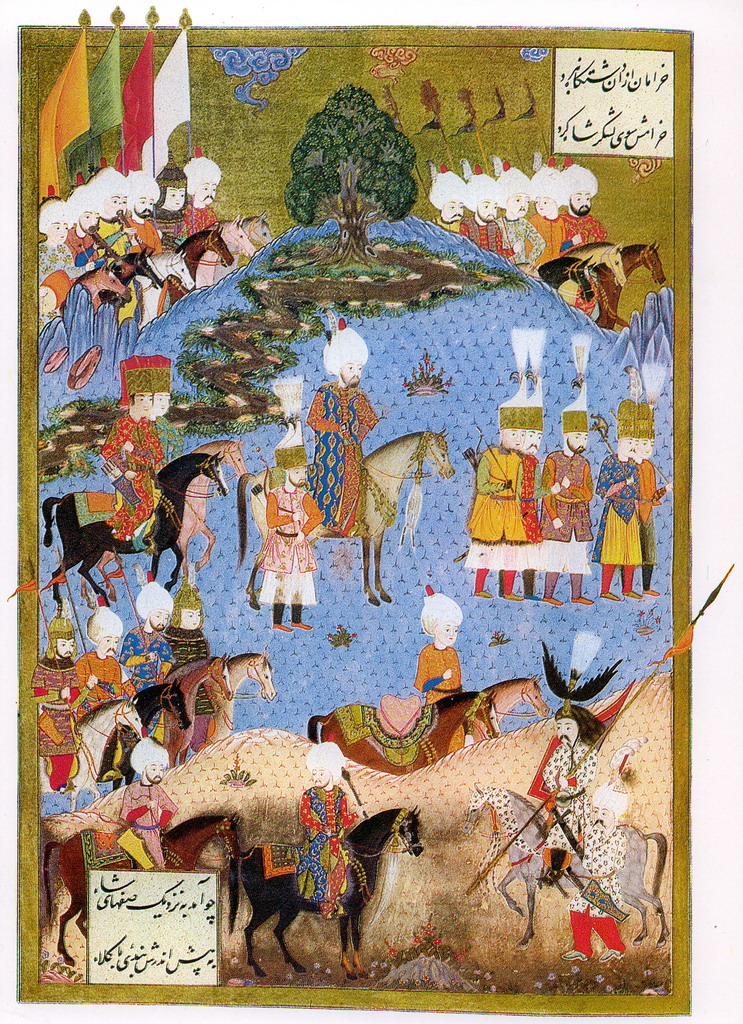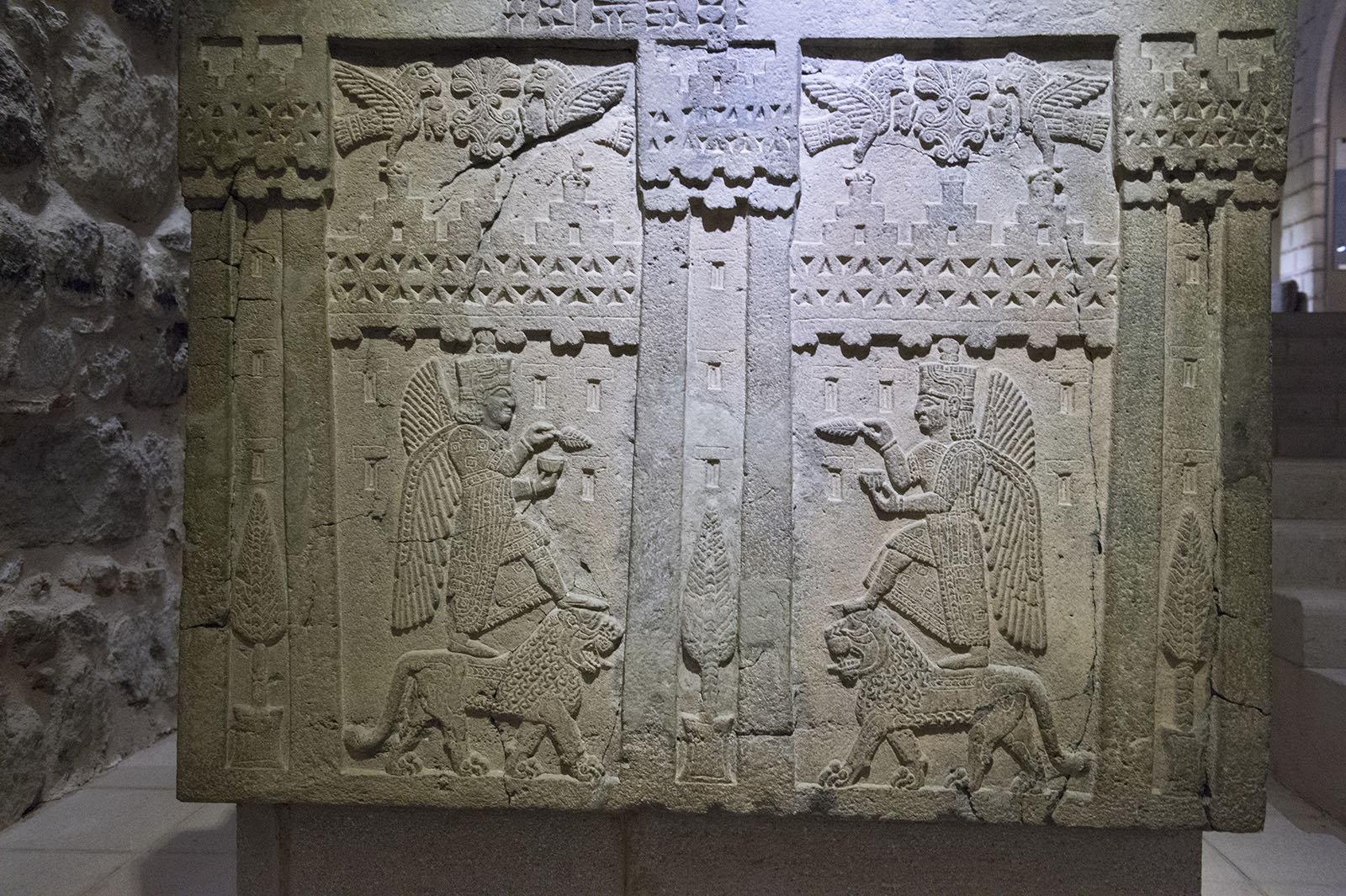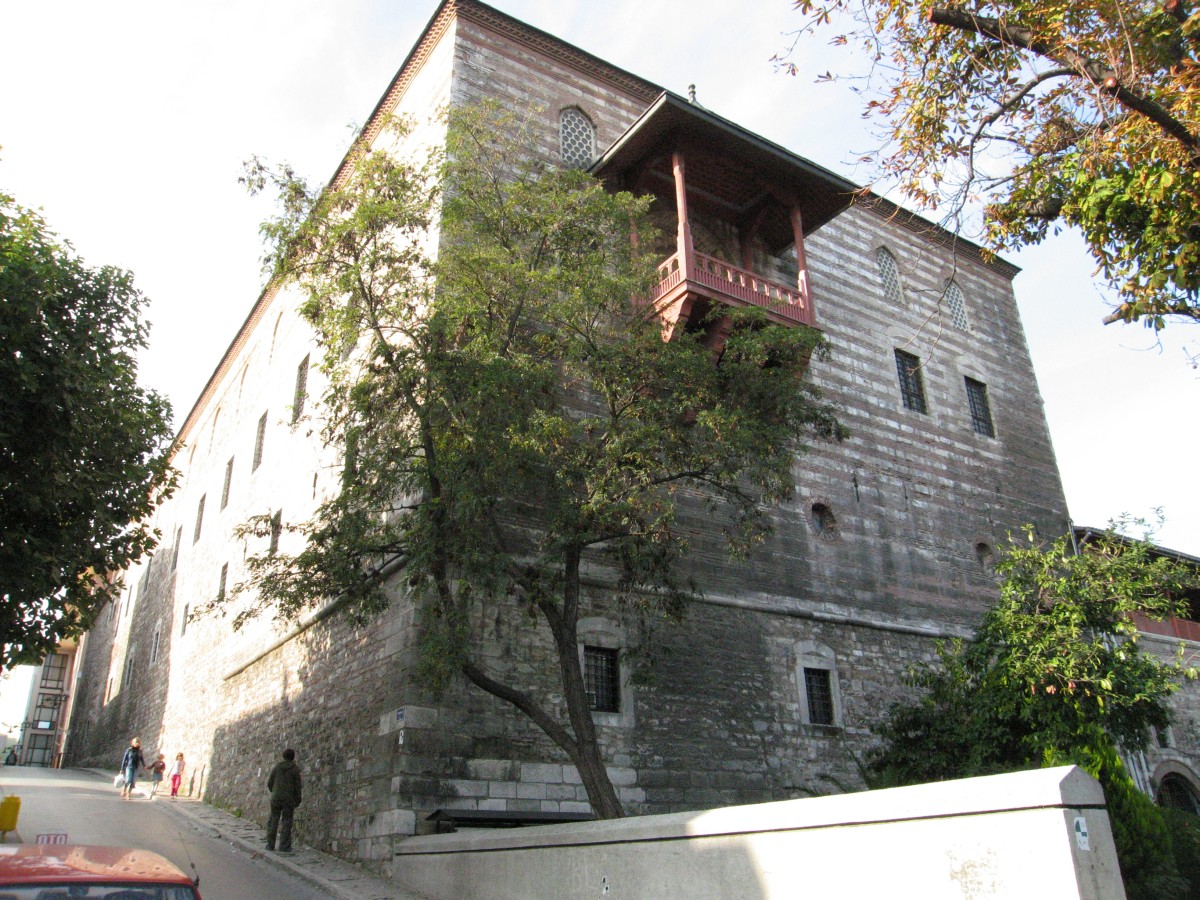|
Ottoman–Safavid War (1532–1555)
The Ottoman–Safavid War of 1532–1555 was one of the many military conflicts fought between the two arch rivals, the Ottoman Empire led by Suleiman the Magnificent, and the Safavid Empire led by Tahmasp I. Background The war was triggered by territorial disputes between the two empires, especially when the Bey of Bitlis decided to put himself under Persian protection.''The Cambridge history of Islam'' by Peter Malcolm Holt, Ann K. S. Lambton, Bernard Lewis p. 33/ref> Also, Tahmasp had the governor of Baghdad, a sympathiser of Suleiman, assassinated. On the diplomatic front, Safavids had been engaged in discussions with the Habsburgs for the formation of a Habsburg–Persian alliance that would attack the Ottoman Empire on two fronts. Campaign of the Two Iraqs (First campaign, 1532–1536) The Ottomans, first under the Grand Vizier Ibrahim Pasha, and later joined by Suleiman himself, successfully attacked Safavid Iraq, recaptured Bitlis, and proceeded to capture Tabriz and ... [...More Info...] [...Related Items...] OR: [Wikipedia] [Google] [Baidu] |
Süleymanname
The ''Süleymannâme'' (lit. "Book of Suleiman") is an illustration of Suleiman the Magnificent's life and achievements. In 65 scenes the miniature paintings are decorated with gold, depicting battles, receptions, hunts and sieges. Written by Fethullah Arifi Çelebi in Persian verse, and illustrated by five unnamed artists, the ''Süleymannâme'' was the fifth volume of the first illustrated history of the Ottoman dynasty. It was written in the manner of the Iranian ''Shahnameh'' epic. The original version of the ''Süleymannâme'' lies in the Topkapi Palace Museum in Istanbul and there is another manuscript in Astan Quds Razavi, the manuscript numbered as manuscript 4249 in Astan Quds Razavi library. The ''Süleymannâme'' is the fifth volume of the ''Shahnama-yi Al-i Osman'' (The Shahnama of the House of Osman) written by Arif Celebi. It is an account of Suleiman's first 35 years of his reign as ruler from 1520 to 1555. The portrayal of Suleiman's reign is idealized, as it not ... [...More Info...] [...Related Items...] OR: [Wikipedia] [Google] [Baidu] |
Tahmasp I
Tahmasp I ( fa, طهماسب, translit=Ṭahmāsb or ; 22 February 1514 – 14 May 1576) was the second shah of Safavid Iran from 1524 to 1576. He was the eldest son of Ismail I and his principal consort, Tajlu Khanum. Ascending the throne after the death of his father on 23 May 1524, the first years of Tahmasp's reign were marked by civil wars between the Qizilbash leaders until 1532, when he asserted his authority and began an absolute monarchy. He soon faced a long-lasting war with the Ottoman Empire, which was divided into three phases. The Ottoman sultan, Suleiman the Magnificent, tried to install his own candidates on the Safavid throne. The war ended with the Peace of Amasya in 1555, with the Ottomans gaining sovereignty over Iraq, much of Kurdistan, and western Georgia. Tahmasp also had conflicts with the Uzbeks of Bukhara over Khorasan, with them repeatedly raiding Herat. In 1528, at the age of fourteen, he defeated the Uzbeks in the Battle of Jam by using artillery, unkno ... [...More Info...] [...Related Items...] OR: [Wikipedia] [Google] [Baidu] |
Baghdad
Baghdad (; ar, بَغْدَاد , ) is the capital of Iraq and the second-largest city in the Arab world after Cairo. It is located on the Tigris near the ruins of the ancient city of Babylon and the Sassanid Persian capital of Ctesiphon. In 762 CE, Baghdad was chosen as the capital of the Abbasid Caliphate, and became its most notable major development project. Within a short time, the city evolved into a significant cultural, commercial, and intellectual center of the Muslim world. This, in addition to housing several key academic institutions, including the House of Wisdom, as well as a multiethnic and multi-religious environment, garnered it a worldwide reputation as the "Center of Learning". Baghdad was the largest city in the world for much of the Abbasid era during the Islamic Golden Age, peaking at a population of more than a million. The city was largely destroyed at the hands of the Mongol Empire in 1258, resulting in a decline that would linger through many c ... [...More Info...] [...Related Items...] OR: [Wikipedia] [Google] [Baidu] |
Bitlis
Bitlis ( hy, Բաղեշ '; ku, Bidlîs; ota, بتليس) is a city in southeastern Turkey and the capital of Bitlis Province. The city is located at an elevation of 1,545 metres, 15 km from Lake Van, in the steep-sided valley of the Bitlis River, a tributary of the Tigris. The local economy is mainly based on agricultural products which include fruits, grain and tobacco. Industry is fairly limited, and deals mainly with leatherworking, manufacture of tobacco products as well as weaving and dyeing of coarse cloth. Bitlis is connected to other urban centres by road, including Tatvan on Lake Van, 25 km to the northeast, and the cities of Muş (Mush), 100 km northwest, and Diyarbakır, 200 km to the west. The climate of Bitlis can be harsh, with long winters and heavy snowfalls. Summers are hot, and often humid. Since the local elections of March 2019, the Mayor of Bitlis is Nesrullah Tanğlay. History Ancient and medieval The origin of the name Bitlis is not ... [...More Info...] [...Related Items...] OR: [Wikipedia] [Google] [Baidu] |
Safavid Empire
Safavid Iran or Safavid Persia (), also referred to as the Safavid Empire, '. was one of the greatest Iranian empires after the 7th-century Muslim conquest of Persia, which was ruled from 1501 to 1736 by the Safavid dynasty. It is often considered the beginning of modern Iranian history, as well as one of the gunpowder empires. The Safavid Shāh Ismā'īl I established the Twelver denomination of Shīʿa Islam as the official religion of the empire, marking one of the most important turning points in the history of Islam. An Iranian dynasty rooted in the Sufi Safavid order founded by Kurdish sheikhs, it heavily intermarried with Turkoman, Georgian, Circassian, and Pontic GreekAnthony Bryer. "Greeks and Türkmens: The Pontic Exception", ''Dumbarton Oaks Papers, Vol. 29'' (1975), Appendix II "Genealogy of the Muslim Marriages of the Princesses of Trebizond" dignitaries and was Turkish-speaking and Turkified. From their base in Ardabil, the Safavids established control ove ... [...More Info...] [...Related Items...] OR: [Wikipedia] [Google] [Baidu] |
Ottoman Empire
The Ottoman Empire, * ; is an archaic version. The definite article forms and were synonymous * and el, Оθωμανική Αυτοκρατορία, Othōmanikē Avtokratoria, label=none * info page on book at Martin Luther University) // CITED: p. 36 (PDF p. 38/338) also known as the Turkish Empire, was an empire that controlled much of Southeast Europe, Western Asia, and Northern Africa between the 14th and early 20th centuries. It was founded at the end of the 13th century in northwestern Anatolia in the town of Söğüt (modern-day Bilecik Province) by the Turkoman tribal leader Osman I. After 1354, the Ottomans crossed into Europe and, with the conquest of the Balkans, the Ottoman beylik was transformed into a transcontinental empire. The Ottomans ended the Byzantine Empire with the conquest of Constantinople in 1453 by Mehmed the Conqueror. Under the reign of Suleiman the Magnificent, the Ottoman Empire marked the peak of its power and prosperity, as well a ... [...More Info...] [...Related Items...] OR: [Wikipedia] [Google] [Baidu] |
Kara Ahmed Pasha
Kara Ahmed Pasha (executed 29 September 1555) was an Ottoman statesman of Albanian origin. He was Grand Vizier of the Ottoman Empire between 1553 and 1555.İsmail Hâmi Danişmend, Osmanlı Devlet Erkânı, Türkiye Yayınevi, İstanbul, 1971 (Turkish) He led the Ottoman troops that captured the Hungarian fortress of Temesvár, defended by the troop of István Losonczy, on 26 July 1552.Sadık Müfit Bilge, "Macaristan'da Osmanlı Hakimiyetinin ve İdarî Teşkilatının Kuruluşu ve Gelişmesi", ''Ankara Üniversitesi Osmanlı Tarihi Araştırma ve Uygulama Merkezi Dergisi'' (OTAM), Sayı: 11 Sayfa: 033-081, 2000p. 59. That year, his army took three other castles (Veszprém, Szolnok and Lipova) before failing at the siege of Eger. After Sultan Suleiman executed his eldest son Şehzade Mustafa in October 1553, there appeared some sort of dissatisfaction and unrest among soldiers who blamed Rüstem Pasha for Mustafa's death. Then Suleiman dismissed Rüstem Pasha and appointe ... [...More Info...] [...Related Items...] OR: [Wikipedia] [Google] [Baidu] |
Alqas Mirza
Abu'l Ghazi Sultan Alqas Mirza ( fa, ابوالقاسم غازی سلطان القاص میرزا), better known as Alqas Mirza (; 15 March 1516 – 9 April 1550), was a Safavid prince and the second son of king (shah) Ismail I (r. 1501–1524). In early 1546, with Ottoman help, he staged a revolt against his brother Tahmasp I (r. 1524–1576), who was king at the time. Biography Of the four sons that survived of Ismail I, Alqas was the second one. Sam Mirza was probably his full brother, while Bahram Mirza and (the future king) Tahmasp were brothers born by other mothers. In 1532/33, he was given the governorship of Astarabad by Tahmasp (by that time king), while Badr Khan Ustajlu was made his regent (''lala''). In March 1538 Tahmasp I ordered Alqas with his regent to move against the rebel Shirvanshah, and six months later he was appointed governor of Shirvan, where he remained for the next eight years. During the frequent Caucasian campaigns under Tahmasp's tenure, Alqas w ... [...More Info...] [...Related Items...] OR: [Wikipedia] [Google] [Baidu] |
Selim II
Selim II ( Ottoman Turkish: سليم ثانى ''Selīm-i sānī'', tr, II. Selim; 28 May 1524 – 15 December 1574), also known as Selim the Blond ( tr, Sarı Selim) or Selim the Drunk ( tr, Sarhoş Selim), was the Sultan of the Ottoman Empire from 1566 until his death in 1574. He was a son of Suleiman the Magnificent and his wife Hurrem Sultan. Selim had been an unlikely candidate for the throne until his brother Mehmed died of smallpox, his half-brother Mustafa was strangled to death by the order of his father, his brother Cihangir succumbed to chronic health issues, and his brother Bayezid was killed on the order of his father after a rebellion against Selim. Selim died on 15 December 1574 and was buried in Hagia Sophia. Early life Selim was born in Constantinople (Istanbul), on 28 May 1524, during the reign of his father Suleiman the Magnificent. His mother was Hurrem Sultan, a slave and concubine who was born an Orthodox priest's daughter in contemporary Ukraine, and lat ... [...More Info...] [...Related Items...] OR: [Wikipedia] [Google] [Baidu] |
Rüstem Pasha
Rüstem Pasha (; ota, رستم پاشا; 1505 – 10 July 1561) was an Ottoman statesman who served as Grand Vizier to Sultan Süleyman the Magnificent. Rüstem Pasha is also known as Damat Rüstem Pasha (the epithet ''damat'' meaning 'son-in-law' ) as a result of his marriage to the sultan's daughter, Mihrimah Sultan, in 1539. He is regarded as one of the most influential and successful grand viziers of the Ottoman Empire. Rustem Pasha was taken as a child to Constantinople (modern-day Istanbul), where he built a military and bureaucratic career. On 26 November 1539, he married Mihrimah Sultan, the daughter of Sultan Suleiman I and his wife Hurrem Sultan. His brother Sinan Pasha was an Ottoman grand admiral. Early life Rustem is referred to as a Croat by Tayib Osman-zade Ahmed, author of 'Hadikatul vuzara' and the Turkish encyclopedia Kamus-ul-alam. He is also referred to as a Croat by the Turkish historiographer Mustafa Âlî, although other sources suggest different Cr ... [...More Info...] [...Related Items...] OR: [Wikipedia] [Google] [Baidu] |
İskender Çelebi
İskender Çelebi (; died March 1535) was a long-serving ''defterdar'' (finance secretary) of the Ottoman Empire during the reign of Suleiman the Magnificent. Possibly the most notable events which befell him took place during the war of 1532–35 against the Safavid Empire. In October 1532, he was ordered to accompany the Grand Vizier, Pargalı Ibrahim Pasha, who was the general of the field army and was heading to the Safavid border from Istanbul. Until the campaign, Pargalı Ibrahim Pasha had regarded İskender Çelebi as a father figure who could provide him with valuable knowledge about his craft. İskender Çelebi was in favour with the Sultan, who personally cautioned Pargalı Ibrahim Pasha not to go against him. Because of this İskender Çelebi became a dominant figure in the campaign. He was even able to order Pargalı Ibrahim Pasha, who had been moving from Aleppo to Baghdad, to go to Azerbaijan instead. Although this act went against Pargalı Ibrahim Pasha's wishes, he ... [...More Info...] [...Related Items...] OR: [Wikipedia] [Google] [Baidu] |
Pargalı Ibrahim Pasha
Pargalı Ibrahim Pasha ("Ibrahim Pasha of Parga"; c. 1495 – 15 March 1536), also known as Frenk Ibrahim Pasha ("the Westerner"), Makbul Ibrahim Pasha ("the Favorite"), which later changed to Maktul Ibrahim Pasha ("the Executed") after his execution in the Topkapı Palace, was the first Grand Vizier of the Ottoman Empire appointed by Sultan Suleiman the Magnificent. Ibrahim, born a Christian, was enslaved during his youth. He and Suleiman became close friends in their youth, and later possibly lovers. In 1523, Suleiman appointed Ibrahim as Grand Vizier to replace Piri Mehmed Pasha, who had been appointed in 1518 by Suleiman's father, the preceding sultan Selim I. Ibrahim remained in office for the next 13 years. He attained a level of authority and influence rivaled by only a handful of other grand viziers of the Empire, but in 1536, he was executed on Suleiman's orders and his property (much of which was gifted to him by the Sultan) was confiscated by the state. Biography ... [...More Info...] [...Related Items...] OR: [Wikipedia] [Google] [Baidu] |





